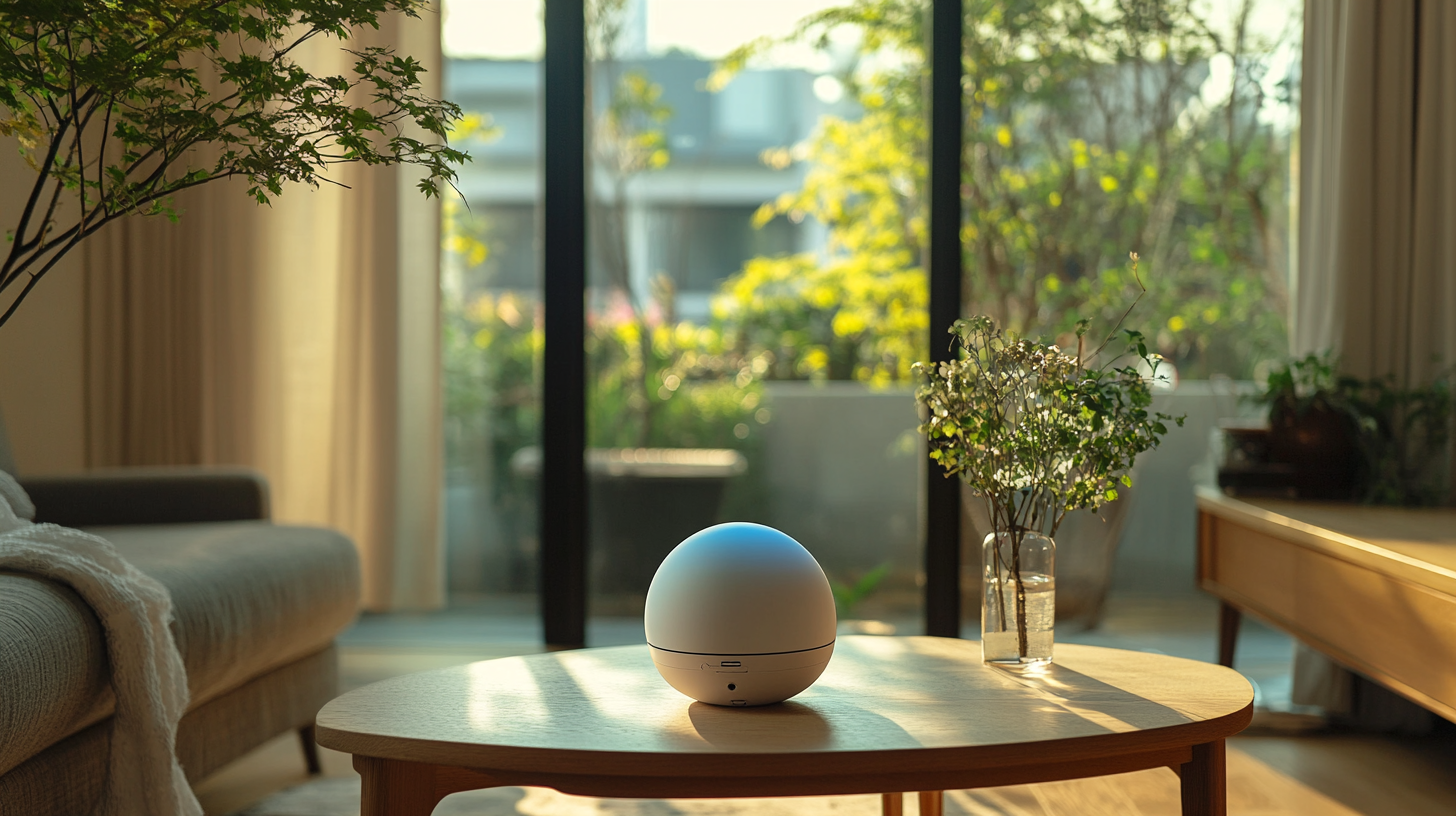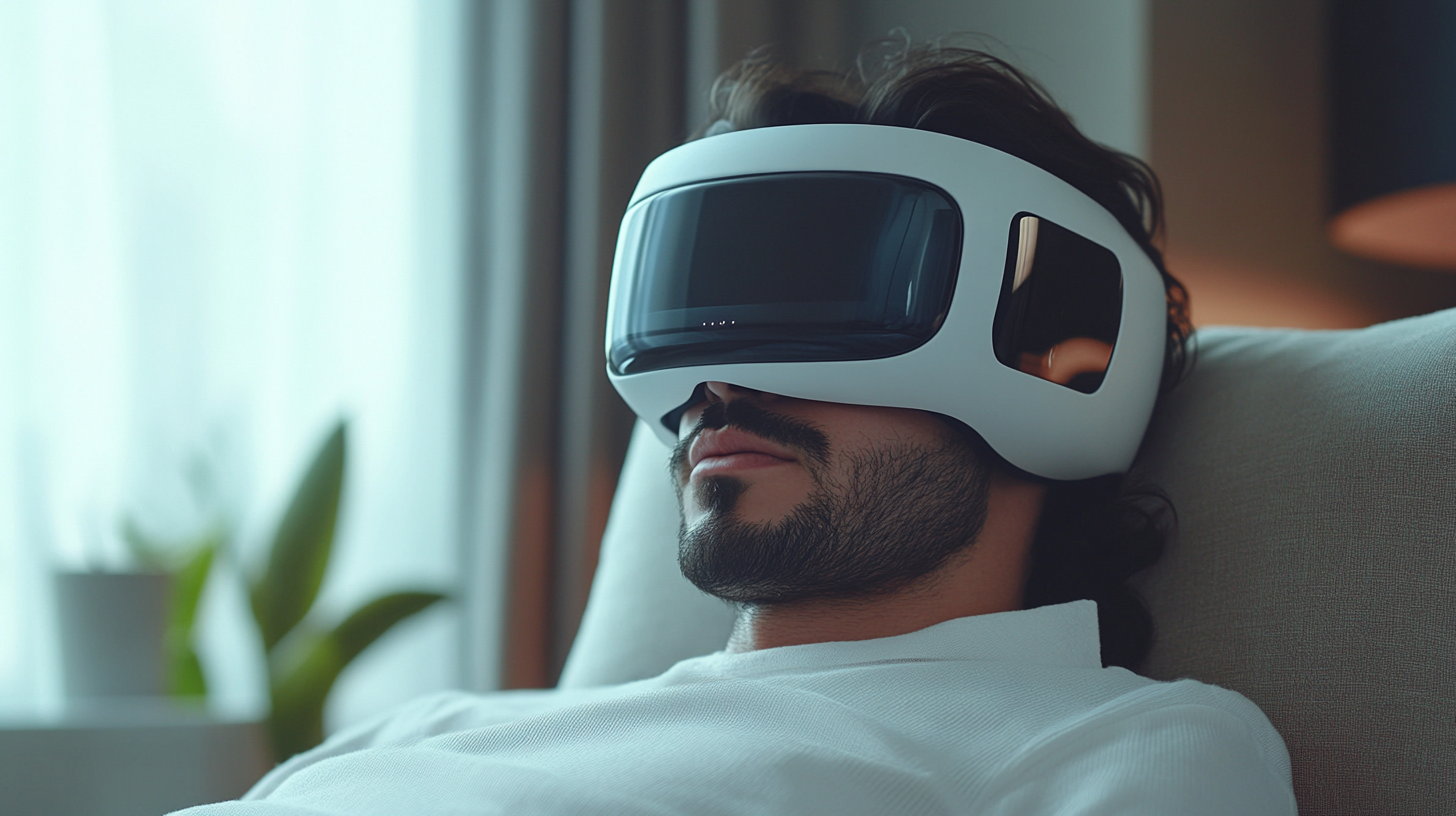The Definitive Resource for Global Buyers: Exploring the TMS At Home Device Revolution
In recent years, the demand for innovative mental health solutions has surged, spurred by a greater awareness of mental health issues and the growing prevalence of conditions such as depression and anxiety. According to a report by the World Health Organization, the global burden of mental disorders is expected to increase by nearly 13% between 2020 and 2030. In this context, transcranial magnetic stimulation (TMS) therapy has emerged as a promising non-invasive treatment option, providing relief for patients when traditional therapies fall short. The advent of the TMS At Home Device represents a significant leap forward, making this groundbreaking therapy more accessible to a wider audience.
As the mental health landscape continues to evolve, the TMS At Home Device has the potential to revolutionize treatment protocols, catering to the needs of patients who may face barriers to in-clinic visits. A recent study from Grand View Research projects the global TMS market to reach $3.05 billion by 2025, driven by technological advancement and a burgeoning interest in home-based treatment options. This blog will serve as a definitive resource for global buyers, dissecting the transformative impact of the TMS At Home Device and helping consumers navigate this exciting new frontier in mental health care.

Understanding TMS Technology: A Game-Changer in Home Health Solutions
Transcranial Magnetic Stimulation (TMS) technology is rapidly emerging as a game-changer in home health solutions, offering innovative ways to enhance mental health from the comfort of one's home. This non-invasive therapy utilizes magnetic fields to stimulate nerve cells in the brain, providing effective treatment for conditions such as depression and anxiety. As mental health issues continue to rise globally, the ability to access TMS at home represents a significant advancement in healthcare, allowing individuals to receive treatment without the barriers often associated with traditional clinical settings. In addition, the integration of technology in healthcare is comparable to the way gaming has revolutionized engagement and interaction. With the rise of health-focused video games and virtual reality environments, there is a growing recognition of their potential to improve physical and mental wellbeing. These platforms can complement TMS therapy by offering users interactive experiences that encourage adherence to treatment plans, promote relaxation, and enhance cognitive function. The convergence of gaming and healthcare underlines a future where therapeutic innovations can be both effective and enjoyable, transforming the landscape of home health solutions and making them more accessible to those in need. As consumers become more informed and proactive about their health, the demand for TMS devices at home is expected to accelerate, fostering a new era of personalized medicine. With this shift, the possibilities for enhancing health outcomes are expanding, making previously inaccessible treatment options available to a broader audience, and ultimately altering the way we approach mental health care.

The Benefits of At-Home TMS Devices for Global Consumers
Transcranial Magnetic Stimulation (TMS) devices have revolutionized mental health treatment, making significant strides in accessibility for global consumers. At-home TMS devices offer an innovative way for individuals to manage conditions such as depression and anxiety from the comfort of their own homes. This breakthrough in technology means that users no longer have to rely solely on in-clinic visits, providing them with greater convenience and flexibility in their treatment plans.
One of the most notable benefits of at-home TMS devices is the empowerment they offer to consumers. By putting the control of their mental health treatment into their own hands, individuals can tailor their sessions to fit their lifestyle and preferences. This increased autonomy can lead to improved adherence to treatment and better overall outcomes. Furthermore, the privacy aspect of at-home therapy can reduce the stigma often associated with mental health treatment, allowing more people to seek help without fear of judgment.
Cost-effectiveness is also a significant benefit of at-home TMS devices. Traditional TMS therapy can be expensive and often not covered by insurance. With the option to purchase or rent at-home devices, consumers can access therapeutic benefits at a fraction of the cost. This affordability makes mental health care more accessible, particularly for those in regions where in-person treatments are limited. As technology continues to advance, the potential for at-home TMS devices to transform mental health treatment on a global scale is immense.

Navigating the Market: Key Features to Look for in TMS Devices
When navigating the market for TMS (Transcranial Magnetic Stimulation) devices for home use, it is essential to understand the key features that differentiate high-quality products from subpar options. One of the foremost criteria is the level of FDA approval or certification. Devices that have undergone rigorous testing and have received regulatory approval are more likely to ensure safety and efficacy in treatment. Always look for devices that are backed by clinical research, as this adds credibility and confidence in their capabilities.
Another important aspect to consider is the ease of use. Many users may be new to TMS technology, so a user-friendly interface and clear instructions are paramount. Features such as intuitive controls, informative displays, and pre-set treatment protocols can make the experience smoother and more accessible for users at all experience levels. Portability is also a crucial factor, as individuals may want a device that can easily fit into their lifestyle, whether at home or on the go.
Additionally, the range of stimulation settings and customization options can greatly enhance the therapeutic experience. Look for devices that offer adjustable intensity levels, treatment durations, and programs tailored for specific conditions. This level of personalization ensures that the device can cater to individual preferences and unique health needs, ultimately leading to more effective outcomes. Being informed about these key features will empower global buyers to make the best investment in their health and well-being.

Comparative Analysis: At-Home TMS Devices vs. Traditional Treatment Methods
The rise of at-home Transcranial Magnetic Stimulation (TMS) devices presents a significant alternative to traditional treatment methods for depression and anxiety disorders. A recent report from the National Institute of Mental Health indicates that nearly 30% of patients do not respond to standard medications, leading to an increased demand for non-invasive therapies. At-home TMS devices offer a convenient option, allowing patients to engage in treatment from the comfort of their homes, thus reducing the need for frequent clinical visits.
When comparing at-home TMS devices to traditional treatments, the financial aspect can be compelling. Traditional TMS treatment typically costs between $6,000 to $12,000 for a full course, which generally spans several weeks of daily sessions. In contrast, many at-home TMS devices are available for purchase or rental at a significantly lower cost, with some models priced around $2,000. A study published in the Journal of Clinical Psychiatry found that patients reported similar efficacy and satisfaction levels when using at-home devices as they did with traditional in-office TMS therapy.
Additionally, the convenience of at-home devices cannot be overstated. According to a survey conducted by the American Psychiatric Association, over 70% of patients expressed a preference for treatment methods that allow them flexibility and control over their schedules. The ability to easily integrate TMS into one’s daily routine is a game-changer for those struggling with mental health issues, particularly for individuals balancing work, family, and therapy commitments. With the ongoing evolution in mental health treatment, at-home TMS devices are poised to revolutionize the way we approach therapy.
Real-Life Success Stories: Transformative Impact of TMS Technology on Users
Transcranial Magnetic Stimulation (TMS) technology has revolutionized the way we approach mental wellness in recent years, with countless individuals heralding its transformative effects. Real-life success stories illustrate not only the efficacy of TMS but also the profound changes it can instigate in users' lives. People who once battled the shadows of depression have found renewed hope through this innovative treatment, which utilizes magnetic fields to stimulate nerve cells in the brain.
Take the case of Sarah, a young professional who struggled with severe depression for years. Traditional medications left her feeling foggy and detached, but after undergoing TMS therapy, she experienced a remarkable shift. The therapy provided her with a clarity she hadn't felt in ages, enabling her to return to work with renewed energy and enthusiasm. Sarah's story is a testament to how TMS can lift the heavy veil of mental illness, allowing individuals to reclaim their lives.
Another poignant example is that of Mike, a veteran who faced PTSD after returning from service. He had tried numerous therapies and medications, but nothing seemed to work. Upon starting TMS treatment, he noticed a gradual but significant change in his emotional state. For Mike, the transformation was not just about alleviating symptoms; it was about rediscovering joy and connection with his family. These narratives showcase the profound impact of TMS technology, highlighting its potential to change lives and fostering a sense of community among users.

